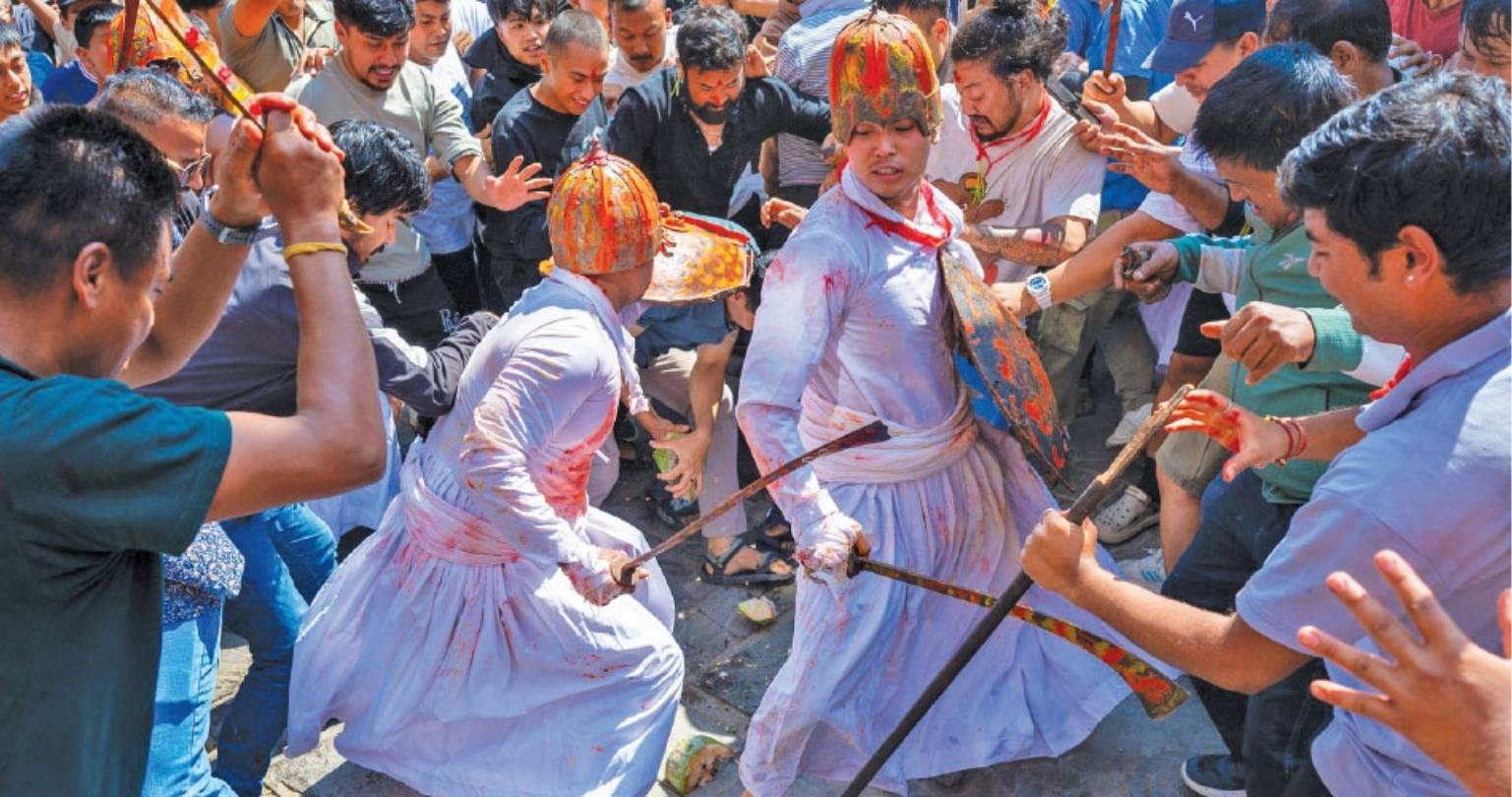
Khã Pihãwai Jatra Reflects Malla-Era Warfare Tradition
On the 11th day of the Dashain festival, Papankusha Ekadashi, the historic ‘Khã Pihãwai Jatra’ (Khã Niskane Jatra) was held in Madhyapur Thimi, reflecting the warfare traditions of the Malla period.
The Jatra was organized from the Dyo Chhen of Taleju Bhawani, located at Layku, which served as the former royal palace. Participants carried traditional weapons such as swords, shields, spears, and armor used in ancient battles, reenacting the martial art performances of the Malla era.
Historical and Cultural Significance
The Khã Pihãwai Jatra involves members of different communities associated with the former royal court. Guthi members, dressed in traditional attire, carry swords, shields, and other weapons to display ancient battle formations. The procession circles the city and concludes at the premises of Kwalkhu Dya: (Bal Kumari Devi), where participants strike a pumpkin (Kubhindo), symbolizing the conclusion of the ritual.
According to Shyamkaji Shrestha, Pama Nayo (Chief Administrator) of Thimi Layku, the procession starts from the palace and divides into two routes. The upper route (Thahneya Tol) proceeds through Inaetol and Duipokhari, ending at Digu Bhairav, while the lower route (Kohneya Tol) passes through Dathutol and concludes at Bal Kumari.
Rituals and Procession Highlights
During the Jatra, the head of a sacrificed buffalo (Khãmye) offered to Taleju Bhawani on Maha Navami is carried along with the royal scepter (Rajdanda) and the deity’s symbols in the city procession.
Communities such as Nayo Pama (chief administrators from the Shrestha clan), Karmacharya, Joshi, Kutu, Pyatha (Prajapati), and Khadgi take part directly in the event. Alongside the buffalo’s head, a blood-filled pot (Hikoncha) is also carried around the city as part of the traditional ritual.
After the procession concludes, the Khadgi community performs the worship of the Hikoncha, sacrifices a sheep, and holds a communal feast — a custom that continues to this day, as noted by Madhyapur Thimi Municipality Mayor Surendra Shrestha.
Symbolism of the Pumpkin Ritual
At Bal Kumari, participants symbolically strike a pumpkin (Kubhindo) as a form of ritual sacrifice. The pumpkin used in this ritual is distributed as sacred offering (Prasad), believed to protect devotees from illness.
Due to this belief, locals eagerly seek pieces of the struck pumpkin. Because the final act of the Jatra involves striking the pumpkin, the event is also known as the ‘Bhui Farsi Palegu Jatra’ (Pumpkin-Striking Festival).
Connection to the Malla-Era Palace
During the Malla period, the administrative center of the then Thimi kingdom was located at the Layku Palace — the current premises of Adarsha Secondary School. The presence of the Layku Chief during any religious or cultural festival of Thimi was considered mandatory.
The Layku Chief is known as Nayo Pama:, while assistants are called Pama:. The Nepal Government’s Guthi Sansthan continues the tradition of appointing the Nayo Pama:. The current Nayo Pama: of Thimi Layku is Shyamkaji Shrestha.
Communities and Their Traditional Roles
In the autonomous Thimi state, various communities such as Joshi, Karmacharya, Shrestha, Prajapati, Kutu, Pyatha, Khadgi, and Kapali were integral parts of palace affairs. Among the Shresthas, groups like Chhun, Khutekhate, and Pwatya served as royal administrators.
The Kutu-Pyatha community functioned as the military arm, while the Khadgi community was responsible for ritual duties and playing traditional musical instruments. The Kapali community crafted musical instruments known as Mwayli Baja, contributing to the cultural heritage that continues to define Thimi’s identity.
Festival

